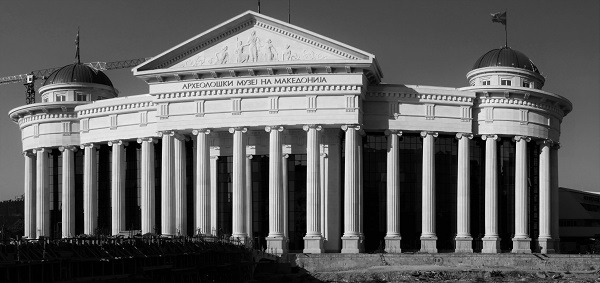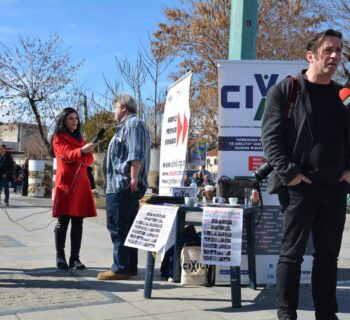Reactions of citizens do not stop in regards to the text: “Water surfaces under the Archeological Museum” that was published on CIVIL’s website on August 17. Opinions are divided, and are primarily driven by the political affiliation of the citizens. However, among the reactions were comments that point out to the fact, which is all well-known to the public, that almost all the new “baroque” structures that have sprung on the banks of the Vardar River share the same problem after more intense rainfalls.
The text that was published by CIVIL Media states that in addition to the “galley” that was flooded, water had also surfaced in the basement of the new Macedonian National Theatre, and employees in the Ministry of Foreign Affairs had also complained of flooding. The text was downloaded by several media outlets, some of which commented it as being untrue.
The Archeological museum denied that there had been flooding, even though this was not claimed in the text, stating that they were surprised and disgusted by such media reporting.
“We believe that these portals have only the purpose of discrediting the work and popularity of the museum. They did not publish the text accidentally, a day prior to today’s event, when we are having an action with the Red Cross for blood donation, as a contribution for the recent tragedy in the flooded areas”, states the denial of the Museum from August 18.
Following such reactions, CIVIL Media investigated the case from a different angle and spoke with a citizen who wished to remain anonymous fearing repercussions. Our interlocutor, who due to her job has access to the building in which the Archeological Museum is located in, shared information in that the museum building has three entrances: from the front side is the entrance for the Archeological Museum, and from the back side are the entrances for the Constitutional Court and the Archives of the Republic of Macedonia.
According to her, the water that had surfaced and the moisture are not only a problem for the Archeological Museum, but also for all the institutions that are located within the same building, as well as for their employees, because this isn’t just an incident, it is a problem that recurs.
“The separation of the Archeological Museum from the Ethnology and Museum of History was not necessary, nor was there a need to place three institutions that are not at all interrelated in the same building”, stated our interlocutor. According to her, the last three floors of the same building belong to the Archive, and on August 23 (a day before the conversation) the lifts, which can otherwise be heard two levels underneath the building, were not working due to the flooded basements, while employees complained that the ventilation was also not working.
“At the top floor where the management staff there are windows that can be opened, while the other two floors do not have natural ventilation. They have central heating and cooling, which is currently not working. Colleagues from the Archive took some pictures that show the conditions in which they work in, but they cannot show them or send them because they will immediately know who took them. The employees work in enormous “ocean” type offices, but they are nothing like that. The ‘ocean system’ means minimum space for each employee and is separated with screens. There is no such space there. The ‘screen’ is made with their cabinets that are high, so there is no access to light, nor air circulation. Employees complain of having health problems, but there is no one who listens...They moved them from a building that was built according to all standards. Currently, they have moisture, and that is where they keep their archival documents. These are spaces that do not meet basic construction, architectural or any other standards necessary for preserving archival documents. They have been facing moisture from the first day the Archive was moved, the documents are damp. They have had this problem from the very start, I have seen it with my own eyes on the walls. So in that building, no matter if they move to a lower floor or remain in the above floor, the documents are already endangered”, said our interlocutor.
“If the documents continue to be kept in that space, they will be damaged, and not to mention the underground space, where water had surfaced. The moving of the depot is suspicious, which until now was located in a building with four floors specially built for that purpose – for preserving archival documents. If they move the entire depot to the new spaces where there is physically no room for those archival materials that are located in the current depot, there is a possibility for precious documents of our cultural and historical heritage to disappear forever”, says our interlocutor.
The building that is part of the “Skopje 2014” project, according to our interlocutor, is not built according to construction standards, nor have considerations been made on the needs of the institutions that are located there.
Biljana Jordanovska
This post is also available in: Macedonian
 Македонски
Македонски Shqip
Shqip English
English








